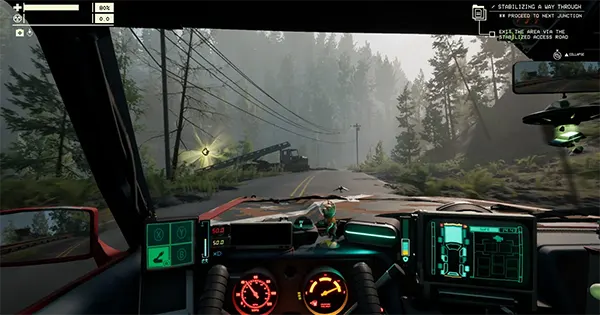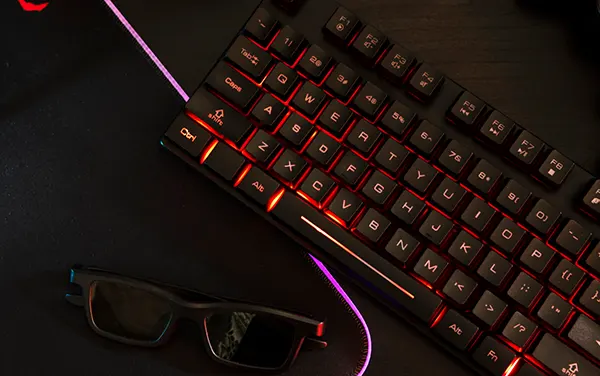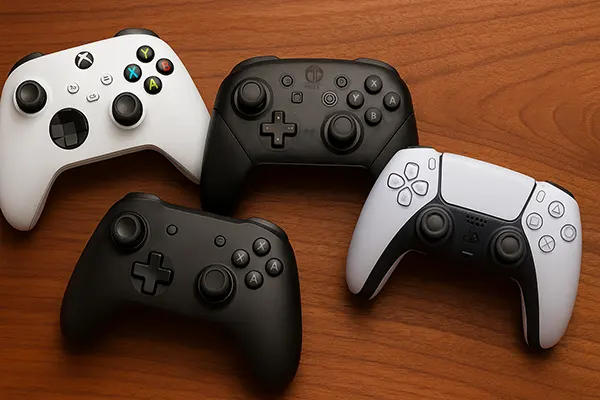
Visual Surrealism and Survival Mechanics in ‘Pacific Drive’: Is Ironwood Studios’ Indie Adventure Worth Your Time?
When Ironwood Studios announced their debut title ‘Pacific Drive,’ the gaming community was immediately intrigued by its atmospheric trailers, eerie setting, and surreal visuals. Released in February 2024 for PC and PlayStation 5, the game quickly captured attention for its unique blend of driving mechanics, survival gameplay, and mysterious storytelling set in the Pacific Northwest. But what lies beneath its ominous fog and abandoned roads, and is it more than just style over substance?
The Unsettling Beauty of the Olympic Exclusion Zone
The game’s setting, a fictional version of the Olympic Exclusion Zone, is one of the most visually compelling backdrops in recent indie game history. The surreal landscape, shaped by environmental anomalies and strange phenomena, challenges the boundaries of reality. Players will encounter levitating debris, floating vehicles, spontaneous electrical storms, and warped forest trails, all delivered with exceptional graphical fidelity thanks to Unreal Engine 4.
What sets the game apart is how this surrealism isn’t merely aesthetic — it serves gameplay and storytelling functions. The environment constantly shifts and mutates, which affects navigation, resource collection, and escape routes. It introduces an ever-present sense of danger that transforms exploration into an exercise in calculated risk-taking.
The game’s commitment to visual surrealism is supported by an atmospheric soundtrack and highly detailed sound design, further immersing players in a space that feels alive and unpredictable. Every journey into the Zone is different, reinforcing the survival horror tone Ironwood Studios intended to convey.
How Surrealism Shapes Gameplay
Unlike traditional open-world games, Pacific Drive integrates its bizarre visual elements directly into gameplay mechanics. A storm cloud might alter your route or disable your car’s systems, while mutated anomalies can corrupt your vehicle’s functions or drain resources. The unpredictable terrain and visual oddities are not just set dressing but dynamic hazards.
Strategic decision-making becomes essential, as players must decide when to continue scavenging and when to retreat to their garage to upgrade their car. Each run into the Zone becomes a procedural journey, where the interplay between environment and survival creates emergent storytelling without the need for heavy exposition.
This synergy between world-building and mechanics turns every expedition into a meaningful challenge. You’re not just surviving — you’re adapting, constantly reevaluating your tactics as the landscape betrays your expectations.
Driving at the Heart of Survival
Pacific Drive’s primary innovation lies in its car-centric survival loop. Your vehicle is not just a means of transport — it’s your lifeline. The player’s car is fully customisable, upgradable, and vulnerable to environmental dangers, requiring constant maintenance, scavenging, and strategic modification to endure the increasing difficulty of the Zone.
Driving feels weighty and tactile, with excellent feedback through DualSense haptics on PS5 and nuanced control on PC. Terrain affects handling, weather alters visibility and movement, and damage from anomalies can lead to intense decisions mid-run — such as abandoning valuable resources to ensure survival.
The crafting system is equally robust. Players collect scrap, electronics, and mysterious artefacts to reinforce their car or unlock new zones. This gameplay loop rewards preparation and foresight, echoing the best elements of survival games like Subnautica and STALKER while maintaining its unique identity.
The Car as Your Only Ally
Pacific Drive avoids conventional NPC interactions or cooperative play. Instead, your car is your only companion — a mobile base of operations and, in many ways, a character in its own right. As you improve it over time, it reflects your progress and choices.
The game builds emotional attachment to your vehicle through visual wear-and-tear, ambient audio, and the simple relief of escaping a dangerous run. Losing your car or letting it become too damaged adds significant emotional and mechanical weight to the gameplay loop.
This relationship becomes the emotional core of the experience. It’s not about conquering the Zone — it’s about surviving it, together with the only machine you can rely on.

Storytelling Through Environment and Discovery
Pacific Drive doesn’t rely on cutscenes or overt exposition. Instead, narrative elements are embedded in the world through audio logs, environmental cues, and subtle clues. This rewards observant players and allows for a more personal and immersive storytelling experience.
The mystery of the Zone’s origin unfolds gradually as you explore deeper into increasingly unstable biomes. Players uncover pieces of the past — abandoned government equipment, scientific experiments gone wrong, and journal entries — that paint a broader picture of what transpired in this forgotten corner of America.
This method of storytelling mirrors that of games like Firewatch or Outer Wilds, where discovery is driven by player agency. It creates a sense of wonder and encourages multiple playthroughs to piece together the full narrative puzzle.
Why the Zone Keeps You Coming Back
The procedural nature of runs and the ever-changing layout ensure that no two expeditions feel the same. Players are driven by a mix of fear, curiosity, and the hope of finally understanding the Zone’s secrets.
Replayability is enhanced by varying challenges, new upgrades, and dynamic objectives. With each return, players gain more insight into the lore while testing new vehicle builds or strategies — creating a loop that feels rewarding rather than repetitive.
Ironwood Studios has struck a rare balance between player-driven narrative and survival tension. The slow-burn story approach works well with the game’s mechanics, building immersion without sacrificing engagement.
Popular articles
-
 How Foot Keyboards and Pedal Controllers A...
How Foot Keyboards and Pedal Controllers A...Foot-based input devices have moved from experimental …
-
 Evolution of PC and Console Controllers in...
Evolution of PC and Console Controllers in...The past two years have reshaped how …
-
 Assassin’s Creed Shadows: A Look at the PC...
Assassin’s Creed Shadows: A Look at the PC...Assassin’s Creed Shadows, the latest entry in …
